This new image of galaxy PKS 2014-55, located 800 million light years from Earth, was made by NRAO scientist William Cotton with the South African Radio Astronomy Observatory (SARAO) MeerKAT telescope. It shows for the first time how the galaxy’s X-shape is actually a ‘double boomerang’. Two powerful jets of radio waves, indicated in blue color, originate from a massive black hole at the center of the galaxy. They each extend 2.5 million light years into space (comparable to the distance between the Milky Way and the Andromeda galaxy, our nearest major neighbour). Eventually, the jets are ‘turned back’ by the pressure of tenuous intergalactic gas. As they flow back towards the central galaxy, they are deflected by its relatively high gas pressure into the shorter, horizontal arms of the boomerang. The background image shows visible light from myriad galaxies in the distant universe.
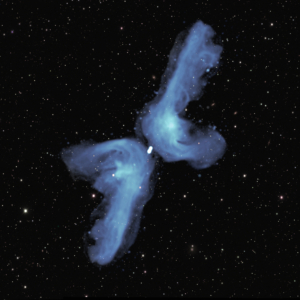
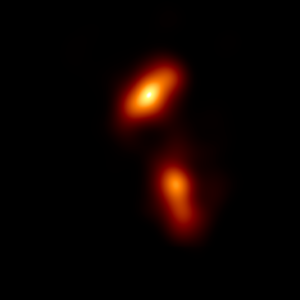
EHT image of quasar 3C 279
The Event Horizon Telescope observed the finest detail ever seen in a jet produced by a supermassive black hole. Quasar 3C 279 contains a black hole about one billion times more massive than our Sun. Twin fire-hose-like jets of plasma erupt from the black hole and disk system at velocities close to the speed of light: a consequence of the enormous forces unleashed as matter descends into the black hole’s immense gravity.
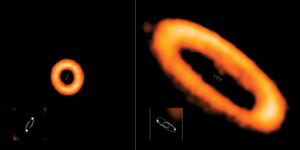
Aligned and Misaligned Circumbinary Disks
Two examples of aligned and misaligned protoplanetary disks around binary stars (circumbinary disks), observed with ALMA. Binary star orbits are added for clarity. Left: in star system HD 98800 B, the disk is misaligned with inner binary stars. The stars are orbiting each other (in this view, towards and away from us) in 315 days. Right: in star system AK Sco, the disk is in line with the orbit of its binary stars. The stars are orbiting each other in 13.6 days.
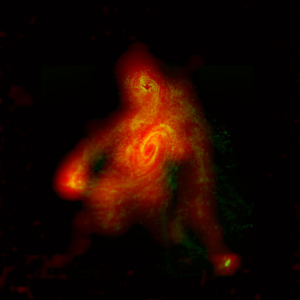
M81 in Radio
The spiral galaxy M81 and its satellite, M82 as seen by the Very Large Array.

MAMBO-9. Distant, Dusty Star-forming Galaxy
ALMA radio image of the dusty star-forming galaxy called MAMBO-9. The galaxy consists of two parts, and it is in the process of merging.
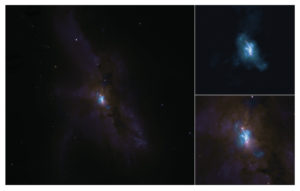
NGC 6240 galaxy crash
NGC 6240 as seen with ALMA (top right) and the Hubble Space Telescope (combined image on the left and zoomed in on the bottom right). In the ALMA image, the molecular gas is blue and the black holes are the red dots. The ALMA image provides the sharpest view of the molecular gas around the black holes in this merging galaxy.





